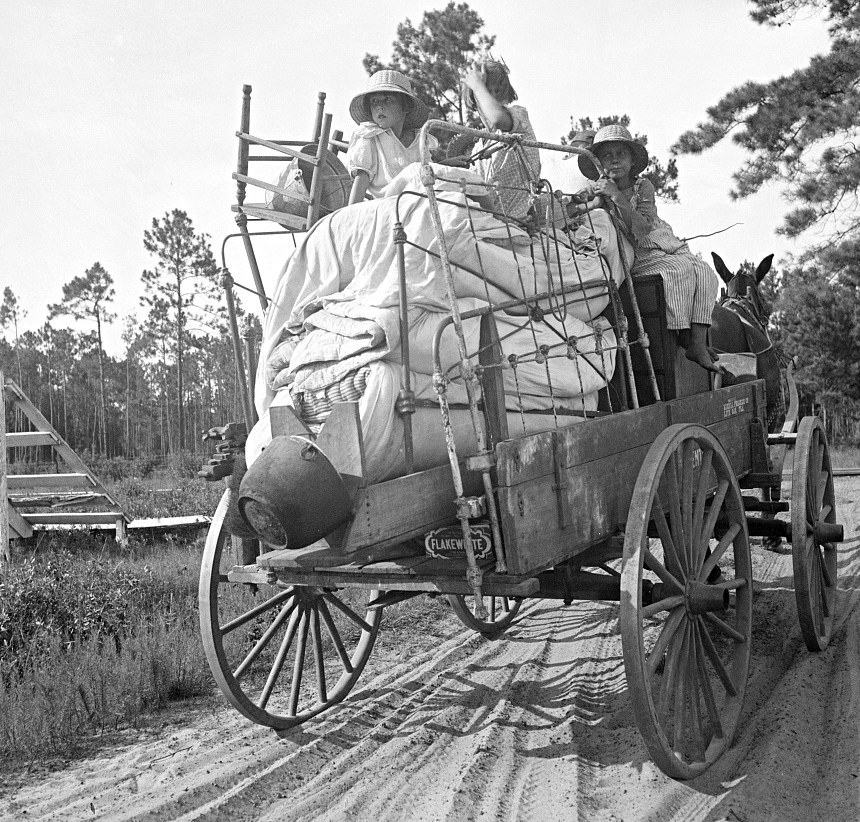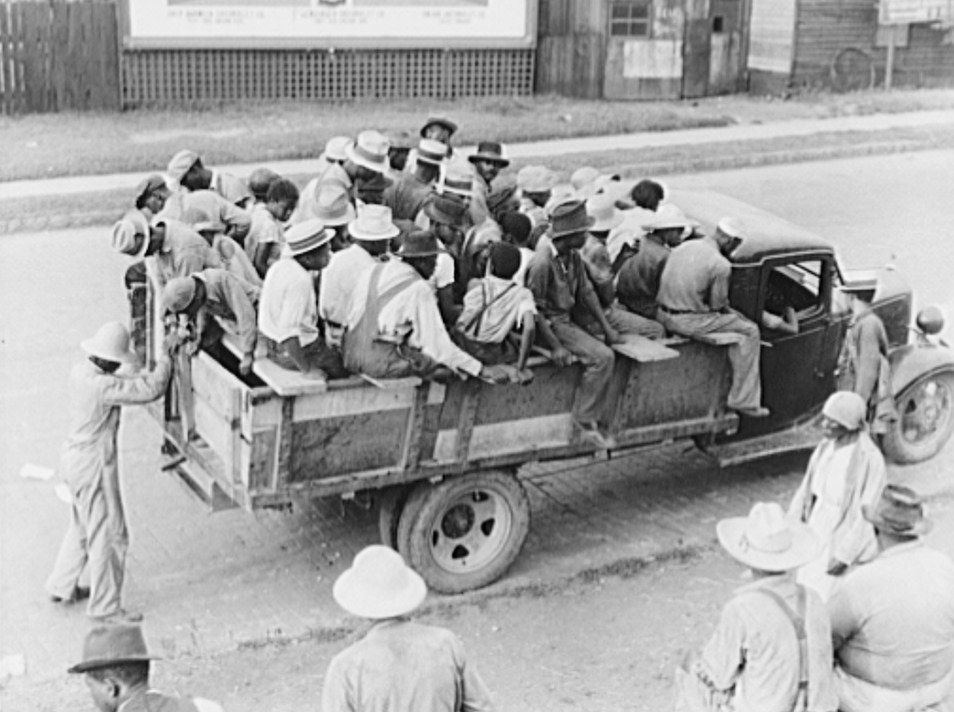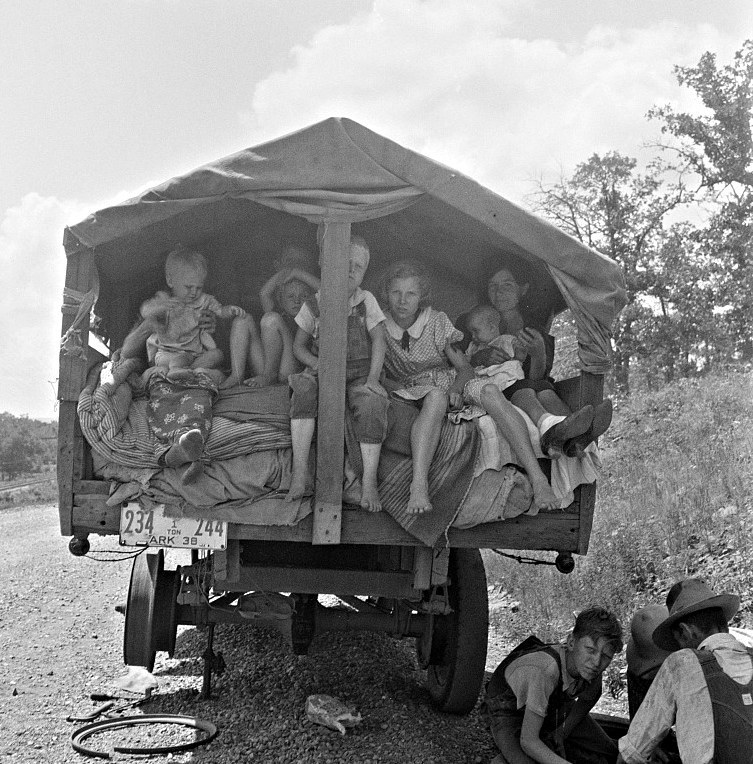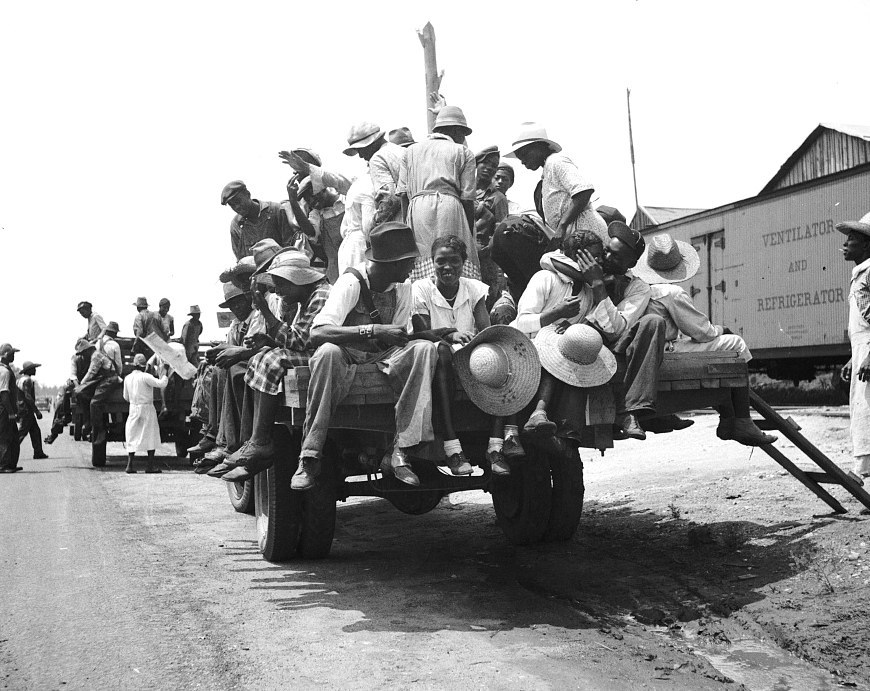









Recording the working conditions in South's agricultural lands, Dorothea Lange was the first photographer to focus on the ecological conditions of the Great Depression and its effects on the human ecology—the "social erosion" of farm workers and farm life.
In Georgia at the time, the annual rural income averaged $200 for whites (South Carolina averaged $151), and it was substantially lower for blacks, less than a $100 a year. By 1935, Georgia land ownership for black farmers dropped below 12 percent. In April 1932, Mississippi foreclosed on one fourth of the state's farmland. A single North Carolina county saw 3,500 farms foreclosed. During this period, in Alabama, 175,000 farms were operated with sharecroppers and tenant laborers.
Their jobs, to prepare and work the fields, to harvest the crops, depended on the crop cycle. The South's croplands yielded peaches, oranges, sugar cane; beans, corn, 80 "truck crops;" peanuts, potatoes, wheat, turpentine; tobacco, rice, and cotton—as market prices dropped. The workers' meager wages depended on shares (a percentage of the harvest) and "furnish" credit (money advanced).
In the 1930s, the nation had 6.2 million farms. By year's end, farm owners and workers typically lost ground.

